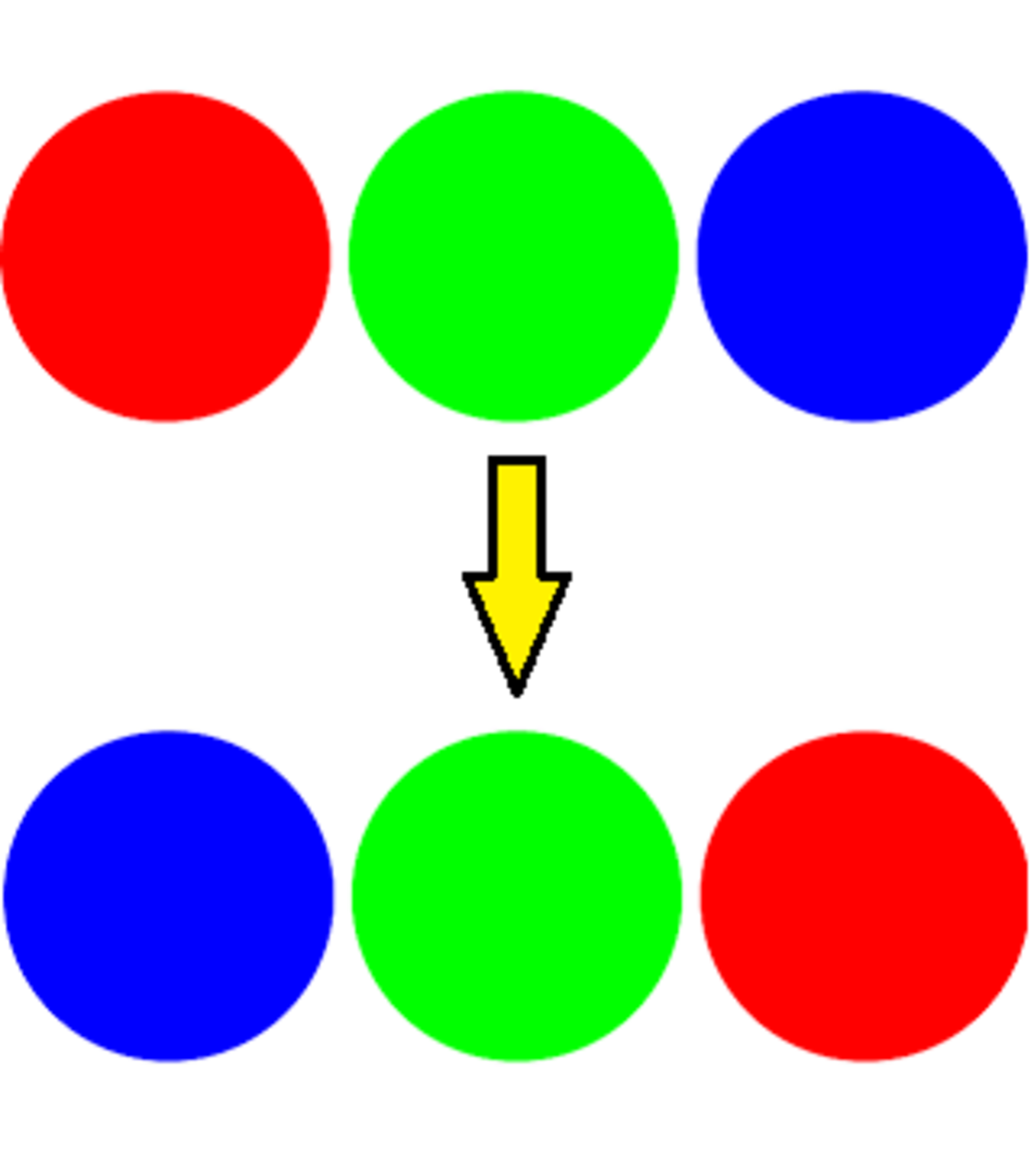Three colors

Three circles arranged in a row, start in the order .
Every move, two circles are randomly switched.
What is the expected number of moves before the circles are in the order .
This section requires Javascript.
You are seeing this because something didn't load right. We suggest you, (a) try
refreshing the page, (b) enabling javascript if it is disabled on your browser and,
finally, (c)
loading the
non-javascript version of this page
. We're sorry about the hassle.
There are three states to consider:
Let E n = The expected number of moves to get from state n to state 1
If you are in state 2, you have a 3 2 chance of going to state 3 and a 3 1 chance of going to state 1.
So, E 2 = 1 + 3 2 E 3 .
If you are in state 3, the next move you will be in state 2, so,
E 3 = 1 + E 2 .
Solving, E 2 = 5